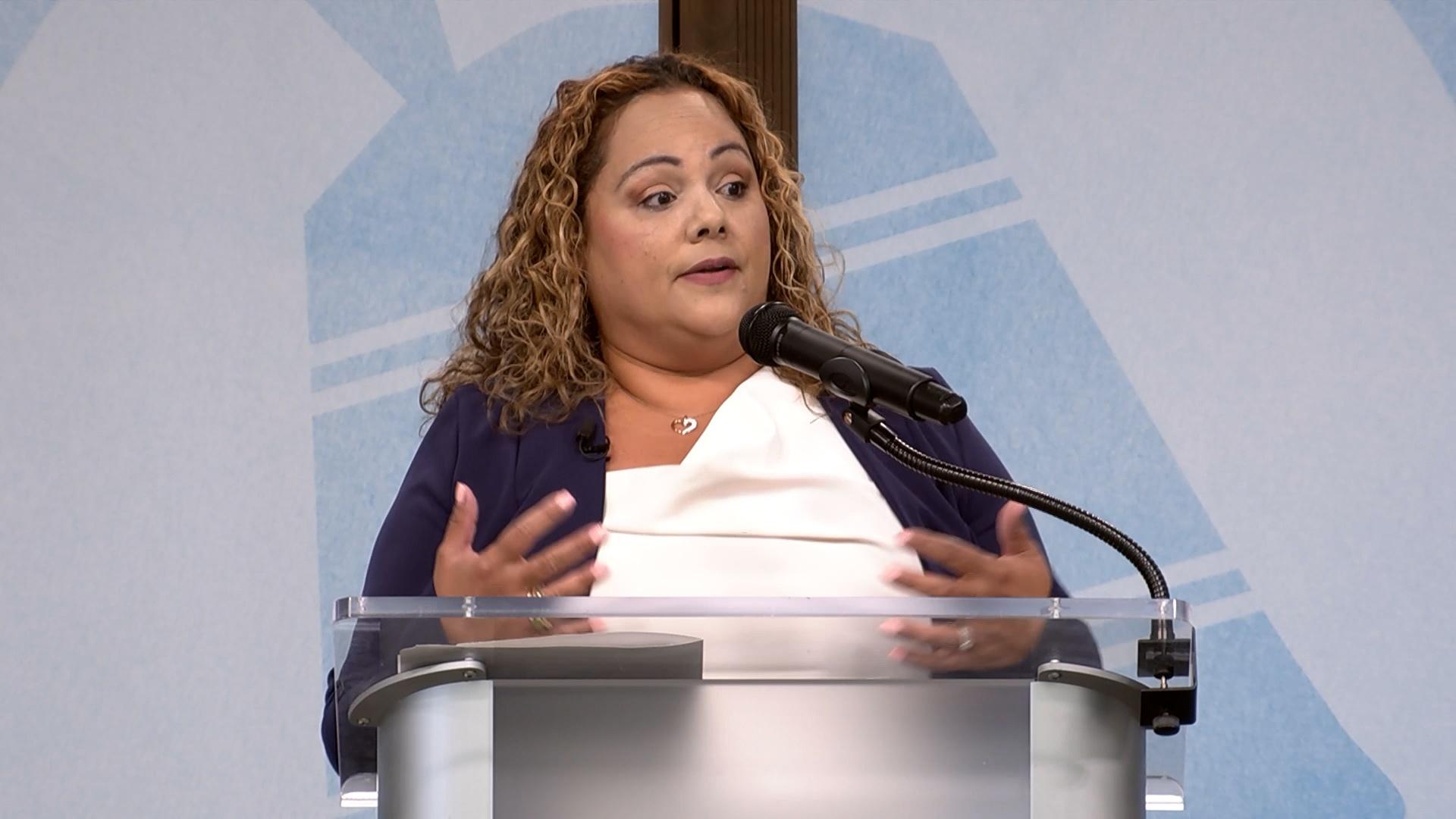Report on Maryland Market Money Program Funding and Alignment with Sustainable Development Goals
Executive Summary
The Maryland Department of Agriculture has received a $16,000 award from the Southern Maryland Agricultural Development Commission (SMADC) to support the Maryland Market Money (MMM) program. This funding, accumulated through community fundraising efforts over five years, highlights a multi-stakeholder commitment to advancing social, economic, and environmental objectives in alignment with the United Nations Sustainable Development Goals (SDGs). The initiative enhances equitable food access for vulnerable families while simultaneously bolstering the local agricultural economy.
Program Overview: Maryland Market Money (MMM)
The Maryland Market Money program is a statewide food access initiative designed to address food insecurity and support local agriculture. It operates by providing a dollar-for-dollar match for federal nutrition benefits, including SNAP, WIC, and FMNP, when used for purchases at participating farmers’ markets, farm stands, and Community Supported Agriculture (CSA) sites. In 2024, the MMM program delivered hundreds of thousands of dollars in matching incentives, significantly increasing the purchasing power of low-income families and channeling revenue directly to Maryland’s farmers.
Alignment with Sustainable Development Goals (SDGs)
The MMM program’s structure and objectives directly contribute to the achievement of several key Sustainable Development Goals:
- SDG 1: No Poverty
- The program effectively increases the disposable income of low-income households by doubling the value of their federal food assistance benefits.
- This financial relief helps alleviate poverty by reducing the economic burden of acquiring nutritious food.
- SDG 2: Zero Hunger
- MMM directly targets food insecurity by making fresh, healthy, and locally-grown food more affordable and accessible to families in need.
- It promotes nutritional security by encouraging the consumption of fruits and vegetables, contributing to the goal of ending all forms of malnutrition.
- SDG 8: Decent Work and Economic Growth
- The program stimulates local economic growth by directing consumer spending to small and medium-sized agricultural enterprises within the state.
- It supports the livelihoods of Maryland farmers, creating more resilient and economically viable local food systems.
- SDG 11: Sustainable Cities and Communities
- By strengthening the link between urban consumers and rural producers, the program fosters more inclusive, safe, and resilient community food systems.
- It supports the viability of local markets as central hubs for community interaction and economic activity.
Stakeholder Collaboration for Sustainable Development (SDG 17)
The success of the Maryland Market Money program exemplifies the principles of SDG 17: Partnerships for the Goals. The initiative is sustained through a robust partnership involving multiple stakeholders:
- State Government (Maryland Department of Agriculture)
- Regional Bodies (Southern Maryland Agricultural Development Commission)
- Federal Grant Programs
- Local Governments
- Community Members (via donations)
This collaborative funding model demonstrates a shared commitment to achieving common goals related to food security, economic development, and community well-being.
Conclusion
The $16,000 award from SMADC to the Maryland Department of Agriculture is a significant contribution that reinforces the Maryland Market Money program’s role as a vital tool for sustainable development. By integrating support for vulnerable populations with the promotion of a sustainable local economy, the program provides a comprehensive model for addressing complex challenges and advancing the Sustainable Development Goals within the state of Maryland.
Analysis of Sustainable Development Goals (SDGs) in the Article
1. Which SDGs are addressed or connected to the issues highlighted in the article?
-
SDG 2: Zero Hunger
The article directly addresses SDG 2 by focusing on the Maryland Market Money (MMM) program, which is described as a “statewide food access initiative that helps combat food insecurity.” The program’s goal is to ensure “equitable food access for Maryland families” by providing them with fresh, local food, which aligns with the core mission of ending hunger and improving nutrition.
-
SDG 1: No Poverty
The program supports families receiving federal nutrition benefits like SNAP and WIC, who are typically low-income. By matching these benefits “dollar-for-dollar,” the program effectively increases the purchasing power of vulnerable families, helping to alleviate poverty by making nutritious food more affordable and accessible. This acts as a social protection measure, a key component of SDG 1.
-
SDG 8: Decent Work and Economic Growth
The article highlights that the MMM program is “strengthening Maryland’s agricultural economy” and “directing vital sales to Maryland farmers.” By creating a stronger market for local agricultural products, the program supports the livelihoods of farmers, promotes local economic growth, and contributes to the viability of small-scale agriculture as a form of decent work.
-
SDG 17: Partnerships for the Goals
The article is a clear example of SDG 17 in action. It details a collaboration between the Maryland Department of Agriculture (a state government body), the Southern Maryland Agricultural Development Commission (a regional council division), and “generous community members” through donations. The funding model, which includes the “State of Maryland, federal grants, local governments, and community donations,” showcases a multi-stakeholder partnership working towards a common goal.
2. What specific targets under those SDGs can be identified based on the article’s content?
-
Target 2.1: By 2030, end hunger and ensure access by all people, in particular the poor and people in vulnerable situations, to safe, nutritious and sufficient food all year round.
The MMM program directly works towards this target by matching federal nutrition benefits for low-income families, thereby increasing their access to “fresh, local food.” The focus on “equitable food access” and combating “food insecurity” is a direct reflection of this target.
-
Target 2.3: By 2030, double the agricultural productivity and incomes of small-scale food producers.
The article states that the program is “strengthening local farms” and “directing vital sales to Maryland farmers.” By providing “hundreds of thousands of dollars in matching incentives,” the program boosts the income of local farmers who participate in farmers’ markets, farm stands, and CSAs, aligning with the goal of supporting small-scale food producers.
-
Target 1.3: Implement nationally appropriate social protection systems and measures for all… and achieve substantial coverage of the poor and the vulnerable.
The MMM program enhances existing federal social protection systems (SNAP, WIC, FMNP) by adding a matching component. This strengthens the social safety net for vulnerable families in Maryland, directly contributing to this target.
-
Target 17.17: Encourage and promote effective public, public-private and civil society partnerships.
The entire initiative described is a partnership. The article highlights the “strength of collaboration across organizations,” specifically mentioning the Maryland Department of Agriculture, the Southern Maryland Agricultural Development Commission, and community donors. This multi-stakeholder approach to funding and implementation is the essence of Target 17.17.
3. Are there any indicators mentioned or implied in the article that can be used to measure progress towards the identified targets?
-
Implied Indicator for Target 2.1: Prevalence of food insecurity.
The article’s stated goal is to “combat food insecurity.” While not providing a direct measurement, the success of the program could be measured by tracking the prevalence of food insecurity among participating families, which is the basis for official SDG indicator 2.1.2.
-
Mentioned Indicator for Target 2.3: Volume of sales/income for small-scale producers.
The article explicitly mentions that in 2024, the MMM program “provided hundreds of thousands of dollars in matching incentives” and directed “vital sales to Maryland farmers.” This dollar amount serves as a direct indicator of the financial support and increased income channeled to local agricultural producers, aligning with indicator 2.3.2 (Average income of small-scale food producers).
-
Implied Indicator for Target 1.3: Number of beneficiaries of social protection programs.
The article refers to families using “federal nutrition benefits (SNAP, WIC, FMNP).” The number of individuals or families who utilize the MMM matching funds would be a key indicator of the program’s reach in enhancing social protection, relating to indicator 1.3.1 (Proportion of population covered by social protection floors/systems).
-
Mentioned Indicator for Target 17.17: Financial contributions to partnerships.
The article provides specific financial figures that serve as direct indicators of partnership contributions. It announces the “$16,000 in funding” from SMADC and mentions that the overall program is funded by the “State of Maryland, federal grants, local governments, and community donations.” These amounts directly measure the financial commitment to the partnership, as per indicator 17.17.1 (Amount of United States dollars committed to public-private and civil society partnerships).
4. Summary Table of SDGs, Targets, and Indicators
| SDGs | Targets | Indicators |
|---|---|---|
| SDG 2: Zero Hunger |
2.1: Ensure access to safe, nutritious and sufficient food for all.
2.3: Double the agricultural productivity and incomes of small-scale food producers. |
Implied: Prevalence of food insecurity among families participating in the MMM program.
Mentioned: The “hundreds of thousands of dollars in matching incentives” that constitute “vital sales to Maryland farmers.” |
| SDG 1: No Poverty | 1.3: Implement nationally appropriate social protection systems. | Implied: The number of families on SNAP, WIC, and FMNP who receive matching funds through the MMM program. |
| SDG 8: Decent Work and Economic Growth | 8.2: Achieve higher levels of economic productivity through diversification, technological upgrading and innovation. | Implied: Increased revenue and economic stability for local farms and farmers’ markets participating in the program. |
| SDG 17: Partnerships for the Goals | 17.17: Encourage and promote effective public, public-private and civil society partnerships. | Mentioned: The “$16,000 in funding” from SMADC and the combination of funding from the “State of Maryland, federal grants, local governments, and community donations.” |
Source: thebaynet.com






